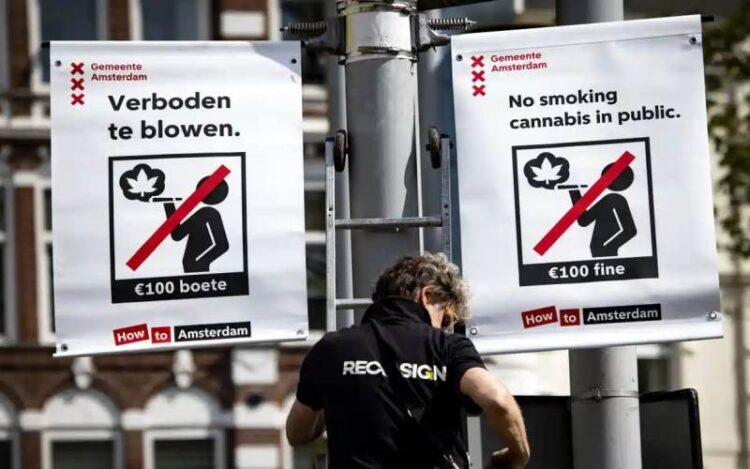Thursday marked the dawn of a new chapter in Amsterdam’s Red Light District as the prohibition of street cannabis smoking officially came into action.
This prohibition forms part of a broader initiative, spearheaded by Mayor Femke Halsema, to create a more resident- and worker-friendly environment in this renowned area.
As reported by Reuters, placards have been put up across this canal-flanked neighborhood infamous for its brothels, sex clubs and marijuana cafes. These establishments draw millions of tourists annually, but pose issues for the locals.
Violators of this fresh regulation would have to bear a €100 (approximately $110) penalty.
This regulation was suggested at the start of this year by the city council of Amsterdam.
“The old city’s inhabitants face serious issues from overcrowding due to tourism and rampant alcohol and drug misuse on the streets. These tourists also attract street dealers who bring crime and insecurity. The situation tends to become bleak, particularly at night. Drug-affected individuals loiter for extended periods. The locals face disturbed sleep and the neighborhood becomes unsafe and inhospitable,” the city council explained in their statement.
“We expect a street smoking ban to alleviate the problem. We are also contemplating a pickup prohibition at certain times for soft drugs. If the problem does not decrease satisfactorily, we might consider extending the ban to include terraces of coffee shops,” the council further elaborated.
The city council officially endorsed the suggestion earlier this month, preparing for its implementation on Thursday.
Reuters reported that people “are still allowed to smoke indoors and on coffee shop terraces that sell marijuana and hashish in the district and across the city.”
The cannabis smoking prohibition is an element of a strategy by Halsema, Amsterdam’s first female mayor, to improve the Red Light District’s conditions.
In 2019, CNN reported that Halsema had presented “four strategies to shield sex workers from unfavorable conditions, combat crime, and decrease the influence of tourism in Amsterdam’s De Wallen red-light district.”
“The presented options include closing the window curtains to protect sex workers from public view, reducing the number of window-based rooms, relocating brothels to different areas in Amsterdam, and potentially setting up a ‘hotel’ for sex workers,” CNN reported. These strategies aim to safeguard sex workers from intrusive tourists and their smartphones, and to prevent an increase in exploitations such as human trafficking. The four options will be discussed with sex workers, local residents, and businesses in July, before being presented to the city council in September. Eventually, these plans will be transformed into a fresh policy on sex work, as confirmed by the mayor’s office.
Known locally as the De Wallen area, the Red Light District has long been a favorite stopover for tourists visiting the city.
CNN earlier this year reported that it is “believed that around 10% to 15% of Amsterdam’s tourism sector is based in the red-light district.”
“City officials are striving to attract visitors to the De Wallen area, the district’s Dutch name, who can appreciate its distinct heritage, architecture, and culture, as opposed to its sex and drug offerings,” CNN stated at the time. There have been several efforts in recent years to minimize the effects of mass tourism and nuisance visitors, and to revamp the area’s image.
In 2020, guided tours were banned from passing by the windows of sex workers, and discussions about relocating the window brothels to a neighborhood outside the city center were initiated—discussions that continue to this day.









